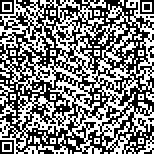王静,陶熔,李言杰,等.超声引导下星状神经节脉冲射频联合电针治疗偏头痛患者的疗效观察[J].中华物理医学与康复杂志,2022,44(10):912-916
扫码阅读全文

|
| 超声引导下星状神经节脉冲射频联合电针治疗偏头痛患者的疗效观察 |
|
| |
| DOI:10.3760/cma.j.issn.0254-1424.2022.10.010 |
| 中文关键词: 脉冲射频 偏头痛 星状神经节 电针 超声引导 |
| 英文关键词: Pulsed radiofrequency irradiation Migraine Stellate ganglion Electroacupuncture Ultrasound |
| 基金项目: |
|
| 摘要点击次数: 5004 |
| 全文下载次数: 5083 |
| 中文摘要: |
| 目的 观察超声引导下星状神经节脉冲射频联合电针治疗偏头痛患者的临床疗效。 方法 采用随机数字表法将72例偏头痛患者分为联合组、针刺组及对照组,每组24例。3组患者均给予依托考昔及佐米曲普坦分散片口服,电针组患者在此基础上辅以电针治疗(每天治疗1次,连续治疗7 d),联合组患者则辅以超声引导下星状神经节脉冲射频(共治疗1次)及电针治疗(每天治疗1次,连续治疗7 d)。于治疗前、治疗后3 d、7 d、30 d及90 d时分别采用疼痛视觉模拟评分法(VAS)、偏头痛特异性生活质量问卷(MSQoL)、汉密尔顿焦虑量表(HAMA)、汉密尔顿抑郁量表(HAMD)及偏头痛失能程度问卷(MIDAS)对3组患者进行疗效评估。 结果 治疗后3 d、7 d、30 d、90 d时联合组、针刺组疼痛VAS、MSQoL、HAMA及HAMD评分均较治疗前明显改善(P<0.05),治疗后30 d、90 d时联合组及针刺组MIDAS评分均较治疗前明显改善(P<0.05)。治疗后3 d时联合组疼痛VAS、MSQoL、HAMA及HAMD评分均显著优于针刺组(P<0.05),治疗后30 d、90 d时联合组MIDAS评分均显著低于针刺组(P<0.05)。治疗后3 d、7 d、30 d、90 d时联合组疼痛VAS、HAMA、HAMD评分均显著低于对照组(P<0.05),MSQoL评分显著高于对照组(P<0.05),治疗后30 d及90 d时联合组MIDAS评分均显著低于对照组(P<0.05)。 结论 超声引导下星状神经节脉冲射频联合电针治疗能在短期内迅速缓解偏头痛患者症状,提高生活质量,且疗效持续时间至少达3个月。 |
| 英文摘要: |
| Objective To observe any effect of combining ultrasound-guided stellate ganglion pulsed radiofrequency irradiation with electroacupuncture in treating migraine. Methods Seventy-two migraine patients were randomly divided into a combined group, an electroacupuncture group and a control group, each of 24. All three groups were treated with etocoxib and zolmitriptan dispersible tablets, while the electroacupuncture group and the combined group were additionally provided with electroacupuncture or ultrasound-guided stellate ganglion pulsed radiofrequency irradiation combined with electroacupuncture. The therapeutic interventions were administered once daily for 7 days. A visual analogue scale (VAS), a migraine-specific quality of life questionnaire (MSQOL), the Hamilton anxiety scale (HAMA), the Hamilton depression scale (HAMD) and a migraine disability scale (MIDAS) were used to evaluate each patient before the experiment and on the 3rd, 7th, 30th and 90th days after completion of the treatment. Results The average VAS, MSQOL, HAMA and HAMD scores of the combined and acupuncture groups had improved significantly at all time points. Moreover, the average MIDAS scores of the combined and acupuncture groups had improved significantly 30 and 90 days after the treatment. On the 3rd day after the treatment, the average VAS, MSQoL, HAMA and HAMD scores of the combined group were significantly higher than the acupuncture group′s averages, while the average MIDAS score of the former group was significantly lower on the 30th and 90th days after the treatment. The average VAS, HAMA and HAMD scores of the combined group were significantly lower than the control group′s averages 3, 7, 30 and 90 days after the treatment, while their average MSQOL score was significantly higher. The average MIDAS score of the combined group was significantly lower than the control group′s average 30 and 90 days after the treatment. Conclusion Ultrasound-guided stellate ganglion pulsed radiofrequency irradiation combined with electroacupuncture can significantly relieve the symptoms of migraine and improve the life quality of migraine patients for at least 3 months. |
|
查看全文
查看/发表评论 下载PDF阅读器 |
| 关闭 |
|
|
|